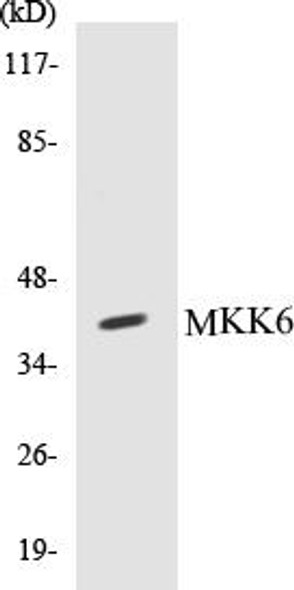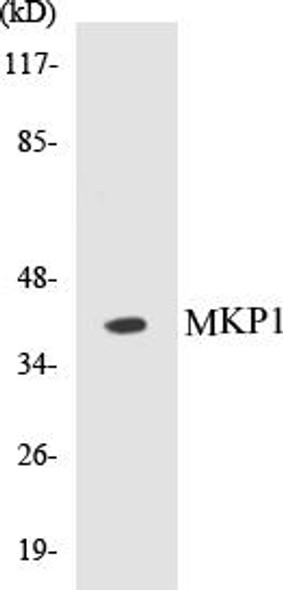Description
CD40 Colorimetric Cell-Based ELISA Kit
The CD40 Colorimetric Cell-Based ELISA Kit is a powerful tool designed for the detection of CD40 levels in cell lysates and tissue homogenates. This kit offers high sensitivity and specificity, providing accurate and reproducible results for a variety of research applications.CD40 is a critical receptor protein involved in immune response regulation and cell signaling. It plays a key role in immune system function, inflammation, and autoimmune diseases, making it a valuable biomarker for studying these conditions and developing potential therapeutic interventions.
With the CD40 Colorimetric Cell-Based ELISA Kit, researchers can confidently measure CD40 levels in their samples, gaining valuable insights into the underlying mechanisms of immune response and disease pathogenesis. This kit is easy to use and offers reliable results, making it an essential tool for any research laboratory investigating CD40-related pathways.
| Product Name: | CD40 Colorimetric Cell-Based ELISA Kit |
| Product Code: | CBCAB00284 |
| ELISA Type: | Cell-Based |
| Target: | CD40 |
| Reactivity: | Human, Mouse |
| Dynamic Range: | > 5000 Cells |
| Detection Method: | Colorimetric 450 nmStorage/Stability:4°C/6 Months |
| Format: | 96-Well Microplate |
The CD40 Colorimetric Cell-Based ELISA Kit is a convenient, lysate-free, high throughput and sensitive assay kit that can detect CD40 protein expression profile in cells. The kit can be used for measuring the relative amounts of CD40 in cultured cells as well as screening for the effects that various treatments, inhibitors (ie siRNA or chemicals), or activators have on CD40.
Qualitative determination of CD40 concentration is achieved by an indirect ELISA format. In essence, CD40 is captured by CD40-specific primary antibodies while the HRP-conjugated secondary antibodies bind the Fc region of the primary antibody. Through this binding, the HRP enzyme conjugated to the secondary antibody can catalyze a colorimetric reaction upon substrate addition. Due to the qualitative nature of the Cell-Based ELISA, multiple normalization methods are needed:
| 1. | A monoclonal antibody specific for human GAPDH is included to serve as an internal positive control in normalizing the target absorbance values. |
| 2. | Following the colorimetric measurement of HRP activity via substrate addition, the Crystal Violet whole-cell staining method may be used to determine cell density. After staining, the results can be analysed by normalizing the absorbance values to cell amounts, by which the plating difference can be adjusted. |
| Database Information: | Gene ID: 958, UniProt ID: P25942, OMIM: 109535/606843, Unigene: Hs.472860 |
| Gene Symbol: | CD40 |
| Sub Type: | None |
| UniProt Protein Function: | CD40: a member of the TNF-receptor superfamily. This receptor for CD40L mediates a broad variety of immune and inflammatory responses including T cell-dependent immunoglobulin class switching, memory B cell development, and germinal center formation. Defects in CD40 are the cause of hyper-IgM immunodeficiency type 3 (HIGM3). HIGM3 is an autosomal recessive disorder which includes an inability of B cells to undergo isotype switching, one of the final differentiation steps in the humoral immune system, an inability to mount an antibody-specific immune response, and a lack of germinal center formation. Two alternatively spliced isoforms have been reported. Isoform I is a type I membrane protein; isoform II is secreted. |
| UniProt Protein Details: | Protein type:Membrane protein, integral; Receptor, cytokine Chromosomal Location of Human Ortholog: 20q12-q13.2 Cellular Component: cell surface; integral to plasma membrane; plasma membrane Molecular Function:enzyme binding; protein binding; receptor activity; signal transducer activity; tumor necrosis factor receptor activity; ubiquitin protein ligase binding Biological Process: activation of NF-kappaB transcription factor; cellular calcium ion homeostasis; immune response; multicellular organismal development; positive regulation of GTPase activity; positive regulation of I-kappaB kinase/NF-kappaB cascade; positive regulation of MAP kinase activity; positive regulation of protein amino acid phosphorylation; positive regulation of transcription from RNA polymerase II promoter; positive regulation of tyrosine phosphorylation of Stat1 protein; protein complex assembly; regulation of cell proliferation; regulation of immune response; response to lipopolysaccharide; tumor necrosis factor-mediated signaling pathway Disease: Immunodeficiency With Hyper-igm, Type 3 |
| NCBI Summary: | This gene is a member of the TNF-receptor superfamily. The encoded protein is a receptor on antigen-presenting cells of the immune system and is essential for mediating a broad variety of immune and inflammatory responses including T cell-dependent immunoglobulin class switching, memory B cell development, and germinal center formation. AT-hook transcription factor AKNA is reported to coordinately regulate the expression of this receptor and its ligand, which may be important for homotypic cell interactions. Adaptor protein TNFR2 interacts with this receptor and serves as a mediator of the signal transduction. The interaction of this receptor and its ligand is found to be necessary for amyloid-beta-induced microglial activation, and thus is thought to be an early event in Alzheimer disease pathogenesis. Mutations affecting this gene are the cause of autosomal recessive hyper-IgM immunodeficiency type 3 (HIGM3). Multiple alternatively spliced transcript variants of this gene encoding distinct isoforms have been reported. [provided by RefSeq, Nov 2014] |
| UniProt Code: | P25942 |
| NCBI GenInfo Identifier: | 116000 |
| NCBI Gene ID: | 958 |
| NCBI Accession: | P25942.1 |
| UniProt Secondary Accession: | P25942,Q53GN5, Q5JY15, Q5U007, Q7M4Q8, Q86YK5, Q9BYU0 E1P5S9, |
| UniProt Related Accession: | P25942 |
| Molecular Weight: | 22,259 Da |
| NCBI Full Name: | Tumor necrosis factor receptor superfamily member 5 |
| NCBI Synonym Full Names: | CD40 molecule |
| NCBI Official Symbol: | CD40 |
| NCBI Official Synonym Symbols: | p50; Bp50; CDW40; TNFRSF5 |
| NCBI Protein Information: | tumor necrosis factor receptor superfamily member 5 |
| UniProt Protein Name: | Tumor necrosis factor receptor superfamily member 5 |
| UniProt Synonym Protein Names: | B-cell surface antigen CD40; Bp50; CD40L receptor; CDw40; CD_antigen: CD40 |
| Protein Family: | CD40 ligand |
| UniProt Gene Name: | CD40 |
| UniProt Entry Name: | TNR5_HUMAN |
| Component | Quantity |
| 96-Well Cell Culture Clear-Bottom Microplate | 2 plates |
| 10X TBS | 24 mL |
| Quenching Buffer | 24 mL |
| Blocking Buffer | 50 mL |
| 15X Wash Buffer | 50 mL |
| Primary Antibody Diluent | 12 mL |
| 100x Anti-Phospho Target Antibody | 60 µL |
| 100x Anti-Target Antibody | 60 µL |
| Anti-GAPDH Antibody | 60 µL |
| HRP-Conjugated Anti-Rabbit IgG Antibody | 12 mL |
| HRP-Conjugated Anti-Mouse IgG Antibody | 12 mL |
| SDS Solution | 12 mL |
| Stop Solution | 24 mL |
| Ready-to-Use Substrate | 12 mL |
| Crystal Violet Solution | 12 mL |
| Adhesive Plate Seals | 2 seals |
The following materials and/or equipment are NOT provided in this kit but are necessary to successfully conduct the experiment:
- Microplate reader able to measure absorbance at 450 nm and/or 595 nm for Crystal Violet Cell Staining (Optional)
- Micropipettes with capability of measuring volumes ranging from 1 µL to 1 ml
- 37% formaldehyde (Sigma Cat# F-8775) or formaldehyde from other sources
- Squirt bottle, manifold dispenser, multichannel pipette reservoir or automated microplate washer
- Graph paper or computer software capable of generating or displaying logarithmic functions
- Absorbent papers or vacuum aspirator
- Test tubes or microfuge tubes capable of storing ≥1 ml
- Poly-L-Lysine (Sigma Cat# P4832 for suspension cells)
- Orbital shaker (optional)
- Deionized or sterile water
*Note: Protocols are specific to each batch/lot. For the correct instructions please follow the protocol included in your kit.
| Step | Procedure |
| 1. | Seed 200 µL of 20,000 adherent cells in culture medium in each well of a 96-well plate. The plates included in the kit are sterile and treated for cell culture. For suspension cells and loosely attached cells, coat the plates with 100 µL of 10 µg/ml Poly-L-Lysine (not included) to each well of a 96-well plate for 30 minutes at 37°C prior to adding cells. |
| 2. | Incubate the cells for overnight at 37°C, 5% CO2. |
| 3. | Treat the cells as desired. |
| 4. | Remove the cell culture medium and rinse with 200 µL of 1x TBS, twice. |
| 5. | Fix the cells by incubating with 100 µL of Fixing Solution for 20 minutes at room temperature. The 4% formaldehyde is used for adherent cells and 8% formaldehyde is used for suspension cells and loosely attached cells. |
| 6. | Remove the Fixing Solution and wash the plate 3 times with 200 µL 1x Wash Buffer for five minutes each time with gentle shaking on the orbital shaker. The plate can be stored at 4°C for a week. |
| 7. | Add 100 µL of Quenching Buffer and incubate for 20 minutes at room temperature. |
| 8. | Wash the plate 3 times with 1x Wash Buffer for 5 minutes each time. |
| 9. | Add 200 µL of Blocking Buffer and incubate for 1 hour at room temperature. |
| 10. | Wash 3 times with 200 µL of 1x Wash Buffer for 5 minutes each time. |
| 11. | Add 50 µL of 1x primary antibodies (Anti-CD40 Antibody and/or Anti-GAPDH Antibody) to the corresponding wells, cover with Parafilm and incubate for 16 hours (overnight) at 4°C. If the target expression is known to be high, incubate for 2 hours at room temperature. |
| 12. | Wash 3 times with 200 µL of 1x Wash Buffer for 5 minutes each time. |
| 13. | Add 50 µL of 1x secondary antibodies (HRP-Conjugated AntiRabbit IgG Antibody or HRP-Conjugated Anti-Mouse IgG Antibody) to corresponding wells and incubate for 1.5 hours at room temperature. |
| 14. | Wash 3 times with 200 µL of 1x Wash Buffer for 5 minutes each time. |
| 15. | Add 50 µL of Ready-to-Use Substrate to each well and incubate for 30 minutes at room temperature in the dark. |
| 16. | Add 50 µL of Stop Solution to each well and read OD at 450 nm immediately using the microplate reader. |
(Additional Crystal Violet staining may be performed if desired – details of this may be found in the kit technical manual.)






